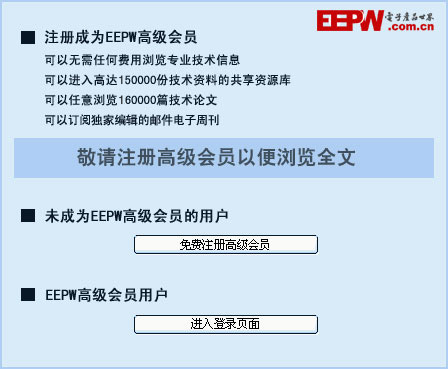ST STM32 Nucleo板32位MCU開發方案
ST公司的STM32 Nucleo開發板包括NUCLEO-F030R8(支持STM32F0), NUCLEO-F103RB(支持STM32F), NUCLEO-F401RE(支持STM32F4)和NUCLEO-L152RE(支持STM32L1),適合各種性能,功耗和特性的組合. STM32 Nucleo開發板集成了ST-Link調試器/編程器,能和各種開發環境如IAR EWARM, Keil MDK, mbed, 基于GCC的IDEs (Atollic TrueStudio)一起使用,很容易開發出STM32 MCU的新原型.本文介紹了STM32L1 32位MCU主要特性和框圖,以及STM32 Nucleo開發板主要特性,框圖,電路圖,材料清單和PCB元件布局圖.
本文引用地址:http://www.czjhyjcfj.com/article/201610/307432.htmThe ultralow power STM32L15xxx incorporates the connectivity power of the universal serial bus (USB) with the high-performance ARM Cortex-M3 32-bit RISC core operating at a 32 MHz frequency, a memory protection unit (MPU), high-speed embedded memories (Flash memory up to 128 Kbytes and RAM up to 16 Kbytes) and an extensive range of enhanced I/Os and peripherals connected to two APB buses. All devices offer a 12-bit ADC, 2 DACs and 2 ultralow power comparators, six general-purpose 16-bit timers and two basic timers, which can be used as time bases. Moreover, the STM32L15xxx devices contain standard and advanced communication interfaces: up to two I2Cs and SPIs, three USARTs and a USB.
The STM32L15xxx devices offer up to 20 capacitive sensing channels to simply add touch sensing functionality to any application. They also include a real-time clock and a set of backup registers that remain powered in Standby mode. Finally, the integrated LCD controller has a built-in LCD voltage generator that allows you to drive up to 8 multiplexed LCDs with contrast independent of the supply voltage. The ultralow power STM32L15xxx operates from a 1.8 to 3.6 V power supply (down to 1.65 V at power down) with BOR and from a 1.65 to 3.6 V power supply without BOR option. It is available in the -40 to +85 ℃ temperature range, extended to 105℃ in low power dissipation state. A comprehensive set of power-saving modes allows the design of low-power applications.
These features make the ultralow power STM32L15xxx microcontroller family suitable for a wide range of applications:
• Medical and handheld equipment
• Application control and user interface
• PC peripherals, gaming, GPS and sport equipment
• Alarm systems, Wired and wireless sensors, Video intercom
• Utility metering
STM32L15xxx主要特性:
• Ultra-low-power platform
– 1.65 V to 3.6 V power supply
– -40℃ to 85℃/105℃ temperature range
– 0.3 μA Standby mode (3 wakeup pins)
– 0.9 μA Standby mode + RTC
– 0.57 μA Stop mode (16 wakeup lines)
– 1.2 μA Stop mode + RTC
– 9 μA Low-power Run mode
– 214 μA/MHz Run mode
– 10 nA ultra-low I/O leakage
– 8 μs wakeup time
• Core: ARM® Cortex™-M3 32-bit CPU
– From 32 kHz up to 32 MHz max
– 33.3 DMIPS peak (Dhrystone 2.1)
– Memory protection unit
• Reset and supply management
– Ultra-safe, low-power BOR (brownout reset) with 5 selectable thresholds
– Ultra-low-power POR/PDR – Programmable voltage detector (PVD)
• Clock sources
– 1 to 24 MHz crystal oscillator
– 32 kHz oscillator for RTC with calibration
– High Speed Internal 16 MHz factory-trimmed RC (+/- 1%)
– Internal Low Power 37 kHz RC
– Internal multispeed low power 65 kHz to 4.2 MHz
– PLL for CPU clock and USB (48 MHz)
• Pre-programmed bootloader
– USART supported
• Development support
– Serial wire debug supported
– JTAG and trace supported
• Up to 83 fast I/Os (73 I/Os 5V tolerant), all mappable on 16 external interrupt vectors
• Memories
– Up to 128 KB Flash with ECC
– Up to 16 KB RAM
– Up to 4 KB of true EEPROM with ECC
– 80 Byte Backup Register
• LCD Driver for up to 8x40 segments
– Support contrast adjustment
– Support blinking mode
– Step-up converter on board
• Rich analog peripherals (down to 1.8 V)
– 12-bit ADC 1 Msps up to 24 channels
– 12-bit DAC 2 channels with output buffers
– 2x Ultra-low-power-comparators (window mode and wake up capability)
• DMA controller 7x channels
• 8x peripherals communication interface
– 1x USB 2.0 (internal 48 MHz PLL)
– 3x USART (ISO 7816, IrDA)
– 2x SPI 16 Mbits/s
– 2x I2C (SMBus/PMBus)
• 10x timers: 6x 16-bit with up to 4 IC/OC/PWM channels, 2x 16-bit basic timer, 2x watchdog timers (independent and window)
• Up to 20 capacitive sensing channels supporting touchkey, linear and rotary touch sensors
• CRC calculation unit, 96-bit unique ID

圖1. 超低功耗STM32L15xxx框圖
STM32 Nucleo開發板
The STM32 Nucleo board (NUCLEO-F103RB, NUCLEO-L152RE, NUCLEO-F401RE, NUCLEO-F030R8, NUCLEO-F072RB) provides an affordable and flexible way for users to try out new ideas and build prototypes with any STM32 microcontroller lines, choosing from the various combinations of performance, power consumption and features. The ArduinoΤΜ connectivity support and ST Morpho headers make it easy to expand the functionality of the Nucleo open development platform with a wide choice of specialized shields. The STM32 Nucleo board does not require any separate probe as it integrates the ST-LINK/V2-1 debugger/programmer. The STM32 Nucleo board comes with the STM32 comprehensive software HAL library together with various packaged software examples, as well as direct access to mbed online resources at mbed.org.
STM32 Nucleo開發板主要特性:
STM32 microcontroller with LQFP64 package
Two types of extension resources
Arduino Uno Revision 3 connectivity
STMicroelectronics Morpho extension pin headers for full access to all STM32 I/Os mbed-enabled (mbed.org)
On-board ST-LINK/V2-1 debugger/programmer with SWD connector selection-mode switch to use the kit as a standalone ST-LINK/V2-1
Flexible board power supply
USB VBUS or external source(3.3 V, 5 V, 7 - 12 V)
Power management access point
Three LEDs
USB communication (LD1), user LED (LD2), power LED (LD3)
Two push buttons: USER and RESET
USB re-enumeration capability: three different interfaces supported on USB
Virtual Com port
Mass storage
Debug port
Comprehensive free software HAL library including a variety of software examples
Supported by wide choice of Integrated Development Environments (IDEs) including IAR, Keil, GCC-based IDEs

圖2. STM32 Nucleo開發板外形圖

圖3. STM32 Nucleo開發板硬件框圖

圖4. STM32 Nucleo開發板硬件電路圖(1)

圖5. STM32 Nucleo開發板硬件電路圖(2)

圖6. STM32 Nucleo開發板硬件電路圖(3)

圖7. STM32 Nucleo開發板硬件電路圖(4)

圖8. STM32 Nucleo開發板PCB元件布局圖:頂層

圖9. STM32 Nucleo開發板PCB元件布局圖:底層
- STM32單片機中文官網
- STM32單片機官方開發工具
- STM32單片機參考設計














評論